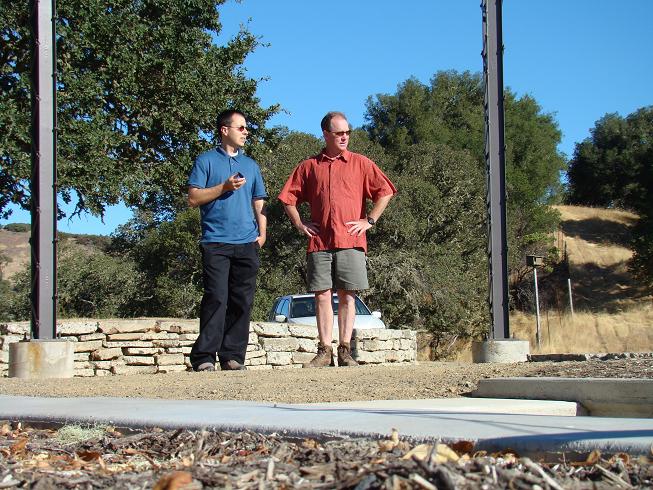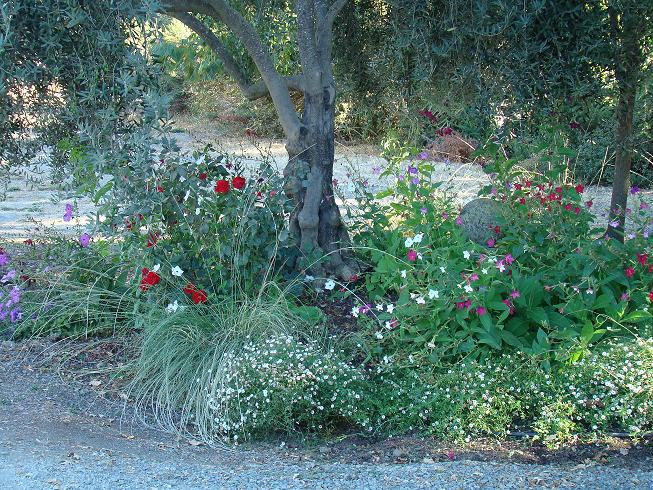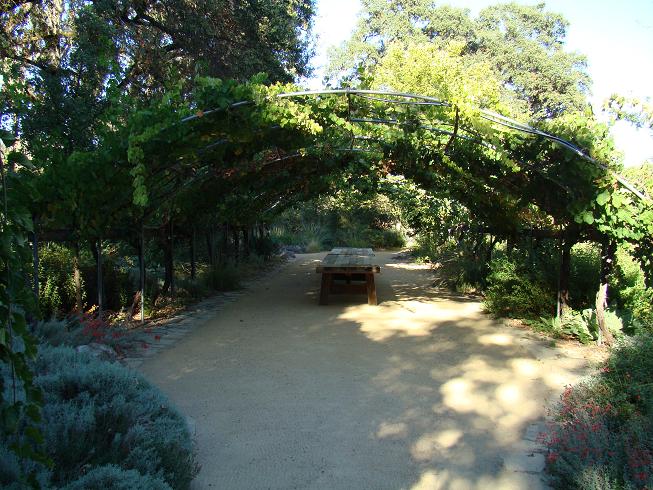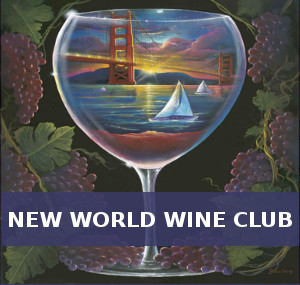Hopland is a very quiet town before 9am on Friday morning. Sure, the occasional truck will rumble through and disturb the stillness, but that hardly takes away from the tranquility. There’s no morning rush hour, so it’s easier to stop, take a breath, and appreciate the beauty of the natural landscape.
A few miles up the road at Saracina Winery, the vibe is no different. Vineyards stretch out across the warming countryside, green and rich with life – not just grape vines. There’s a beauty to the natural balance of things, and the winery wants to protect the gifts nature has given them. As winemaker Alex MacGregor puts it, “If you drive down highway 29 in the Napa Valley, you’ll see nude, tilled, not a weed in the vineyards. People ought to change their mindset, their sense of aesthetic for what makes a beautiful vineyard. Some weeds, in the right places, are good not bad.” In Mendocino, people see the beauty in the weeds. In particular, the Fetzer and the Frey families have been a major driving force for the commitment to organic farming, Alex explains to me. Paul Dolan was also an instrumental figure in converting a number of Fetzer growers over to organic methods. The Fetzer’s son, John, proprietor of Saracina, carries on the family legacy.
The Saracina wines all come from organically farmed fruit, often supplied by old Fetzer growers. It requires of lot of work to farm this way. Weeding, hoeing, and harvesting are all done by hand, so there’s some extra expense built into the process, but if you think in terms of cost to the land, it’s a different story. As Alex points out, there’s a cost for needing to fix earth that has been sprayed. There’s also the cost of not being able to get as many fish out of the delta or shrimp out of the gulf. Alex sees an inevitable shift in thinking, where the next generation of wine drinkers considers more about how wine gets into the bottle rather than simply the price tag. Many consumers already think carefully about how their food ends up on the table; wine seems on track to follow suit.
Read reviews of Saracina wines here
Across town at Campovida, Josh Metz of the Magnanimous Wine Group, has many similar views and philosophies. The story there is one of many shades of green, and it’s not only because it’s hard to imagine a more picturesque spot. Nature rules here. There are expansive flower and food gardens back behind the tasting room brought to international fame by Kate Frey, which offer a variety of luxurious colors and smells. In these shaded sections, surrounded by a rainbow of plant life, there’s an incredible calm, a great sense of tranquility. Whether they are farming plants or grapes, everything is done with great respect for nature. The collection of wines they have to offer all come from organic, biodynamic, or sustainably farmed vineyards.
Their commitment to environmentally friendly farming methods hasn’t compromised their quest for quality. In fact, they’re committed to quality first. “We’re trying to sell our wine based on the fact that it tastes good and the price is competitive,” Josh says. The fact that the wine is produced with organic, biodynamic, or sustainable farming methods is an additional bonus. Most wineries employing similar farming techniques are of the same mind set. Some of these wineries believe conventionally farmed grapes don’t have the same quality as their grapes, and there’s certainly debate about it. Personally, I think Josh sums up the issue quite well: “If the definition of quality includes the total elimination of blemishes, then that’s not going to work. If you look at it in a bigger context, that your soil and ecosystem is healthier, that you’re able to spend less on chemical inputs for the farm, and you’re not a part of the whole industrial system, if those are components of quality, then there are great benefits in that direction.” In terms of quality of flavor, Josh is straight forward, stating that it’s hard to say there’s a definitive difference in taste between wines produced with conventional methods and those made in a more environmentally friendly fashion, but as he points out, given two bottles of comparable quality, why not choose the one produced organically or sustainably? It’s simply better for the earth.
Around Mendocino County, he’s preaching to the choir. For a lot of other consumers, it’s not always as clear cut. People “vote with their dollars,” as Josh puts it. Right now, especially, it seems that a lower price tag can outweigh the bonus of an organically farmed wine. Still, as Josh and Alex both point out, there’s a big picture cost we don’t really see. There’s nothing wrong with value, but maybe when we think about value, farming practices should be part of that evaluation. Paying a bit more for a wine of comparable quality that’s organic, biodynamic, or sustainably farmed just might be a better value. Since there’s no shortage of quality wines from Mendocino, it’s very worth checking them out.
Read reviews of wines from the Magnanimous Wine Group here















